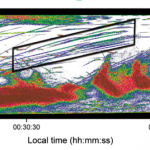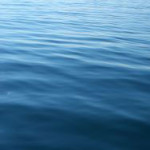 I like to look at the bright side. Tell me 90% of sharks are gone from the ocean, and my mind will spin the problem like a puzzle until there’s light at the end of the tunnel. If 90% of sharks are gone, then 10% of sharks are still swimming, right?
I like to look at the bright side. Tell me 90% of sharks are gone from the ocean, and my mind will spin the problem like a puzzle until there’s light at the end of the tunnel. If 90% of sharks are gone, then 10% of sharks are still swimming, right?
Take away 90% of the cats in my neighborhood and I guarantee the feline population (n = 100) will bounce back in two years, even with a low mean kitty litter (r1 =5) and high mortality (r2 =0.4). Why worry about ocean life? They live in 2/3 of the world. We live in just a little bit. Mako sharks have 12-14 pups. Whale sharks have hundreds. If we can get it together to save the last 10% of sharks swimming in the ocean, those populations should recover.
Don’t get me wrong. I wouldn’t be working in marine conservation if I didn’t believe the oceans are in serious trouble. Things are bad on the high seas. Fisheries are expanding wherever they’re not collapsing. The global appetite for seafood is growing. Polar bears and penguins are starving. Pollution is pervasive. But as a scientist, you have to consider both sides of every story, even the grim ones. You have to keep an open mind.
So, I’m the King of d’Nile. When Charlie Moore of Algalita Foundation said plastic outnumbers plankton 6:1 in the North Pacific gyre, my first thought was “Uggh. When will it end?” My heart went out to sea turtles with bellies full of trash. The next thought was “That’s ironic. Plastic and plankton have the same prefix.” Then, “Hmm. Ocean gyres and eddies aggregate plastic. That’s oddly efficient. Maybe we could put trawl fishermen to work seining plastic from the sea.”
Global warming? Please, my friends, don’t be Holocen-tric. It’s all happened before. We’re in a period heightened solar activity that will end soon. Greenhouse gases don’t help, of course, but look at it this way, in the worst possible future, we all live in the ocean. The sea will rise to reclaim its rightful territory. Human retreat is inevitable. New surf breaks, beaches, coral reefs, and mangrove habitats lie on the horizon. It’s a Waterworld. What’s to worry?
This is a great time in history. Environmental awareness is at an all time high. Seriously, we’re not exploding nuclear bombs undersea anymore, right? We’ve learned from our mistakes. We have the capacity to communicate and manage these problems like never before. Technologies are in place to monitor ocean activity and ocean health from outer space.
There are signs of a sea-change around us. Three of the world’s largest marine protected areas were established in the last two years. Blue whale stocks are rebounding. Magnuson Stevens Act was reauthorized. Municipalities are upgrading their waste water treatment plants around the world. San Francisco banned plastic bags. Hey. Deep Sea News is at Scienceblogs. Everything is looking up!
If you’re not entirely convinced that we can fix this World Ocean problem, here’s but a few examples of human ingenuity that help to promise a bright and shining ocean future in the new millennia:
1. Sealand – Retired Major Roy Bates in the British army moves to an abandoned platform in international waters seven miles off the east coast of England, broadcasts pirate radio, designs a flag, and calls himself Prince. Moral of the story – Ocean zoning is inevitable and favorable. Privatization fosters stewardship. Everybody makes a million bucks.
2. Phytoplankton chips – A watery Earth is an algae planet, and a source of endless nutrition. People consuming Marine Phytoplankton will report significantly increased levels of energy and vitality. It’s like Utopia and Battlestar Galactica all rolled into one. We have the technology. Unsustainable fisheries will be abolished. Like Sylvia Earle says… “fish are our friends.”
3. Public submarines – Platforms are privatized, but a new tourist based economy allows companies like Seamagine to proliferate. You catch a ride in a submarine like you hail a cab in New York City. Finally, an easy way to get around underwater. Next ocean engineers will develop the perfect a NITROX mouthpiece so our civilization can repopulate the oceans the way the hippopotamus became the whale.
4. The Trilobus – We link to this genius design for an ocean going coupe anytime we can. This is the future of pelagic transportation. Sit back and enjoy the ride.







Regarding phytoplankton chips… go out and rent Soylent Green today.
My sons college fund is really a personal submarine fund… thats the only way i can get grandma and grandpa to keep contributing every christmas and birthday.
I’m not sure if your being sarcastic with this post. It seems awfully like it.
Not entirely.
I’m glad that there is room for optimism with regards to the ocean. Doomsday thinking never helped anybody, even doomed people. I am a little dubious about the whole phytoplankton thing, but if we can get more people to randomly eat things in the sea that we haven’t eaten before, maybe we’ll find a lot more a lot more that’s too our benefit (watch the video on the link- great story). Now that tastes like progress. I’m also glad for the invention of the see-through boat, because if the ocean truly becomes destroyed, we’d want to be able to see it up close and in comfort.